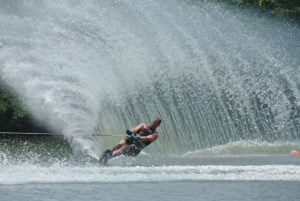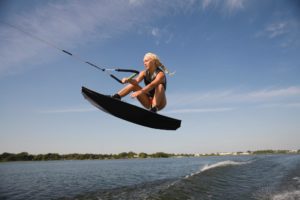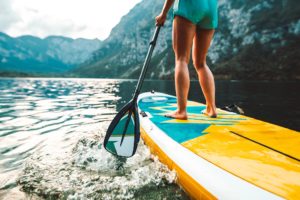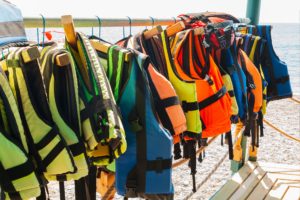 Stand up paddleboarding (check out our selection of SUP here) has become the fastest growing water sport in the world. It’s accessible to most, relatively safe, a good upper body workout, and of course, loads of fun. You can SUP on lakes of all sizes, oceans, rivers and reservoirs. With the rise in popularity, many paddleboarders often forget that being on a paddleboard requires the same safety precautions and vigilance as any other activity in the water. There is never a better time to brush up on some paddleboarding tips and most importantly, water safety practices. First off, every paddle boarder should know that any SUP over 10 feet in length is considered a vessel when used “beyond the narrow limits of a swimming, surfing or bathing area.” That means that a paddle board must follow the same rules as any other size boat, from cruise ship to sail boat, in open waters. Paddle boarders must be prepared, alert and follow the same precautions as all other vessels. The first rule is that all stand up paddle boarders must wear a have a life jacket on board. Check out these other important safety guidelines to practice while paddle boarding. Click here for more information about Stand Up Paddleboard regulations.
Stand up paddleboarding (check out our selection of SUP here) has become the fastest growing water sport in the world. It’s accessible to most, relatively safe, a good upper body workout, and of course, loads of fun. You can SUP on lakes of all sizes, oceans, rivers and reservoirs. With the rise in popularity, many paddleboarders often forget that being on a paddleboard requires the same safety precautions and vigilance as any other activity in the water. There is never a better time to brush up on some paddleboarding tips and most importantly, water safety practices. First off, every paddle boarder should know that any SUP over 10 feet in length is considered a vessel when used “beyond the narrow limits of a swimming, surfing or bathing area.” That means that a paddle board must follow the same rules as any other size boat, from cruise ship to sail boat, in open waters. Paddle boarders must be prepared, alert and follow the same precautions as all other vessels. The first rule is that all stand up paddle boarders must wear a have a life jacket on board. Check out these other important safety guidelines to practice while paddle boarding. Click here for more information about Stand Up Paddleboard regulations.
- Wear a life jacket.
- Carry a whistle that will work when wet so that you can be heard if you get in trouble.
- Be a competent swimmer. If you’re not comfortable with your swimming skills, paddle board in swimming areas where the water is shallow.
- Never paddle further away from the shore than you can swim.
- Know how to self rescue. If you fall off, simply grab the board with both hands and pull your chest over the board. Then swing your legs around and get back up. Almost any person of any size can perform this maneuver, but practice self rescue before heading out too far.
- Know how to tow another board.
- Familiarize yourself with local water rules and regulations.
- Understand the elements and hazards of the water and nearby coast – winds, tidal ranges, current and terrain.
- Practice defensive paddle boarding. Do not paddle where you aren’t supposed to be and avoid other swimmers, boaters, paddle boards.
- Use proper blade angle to be the most efficient paddle boarder.








